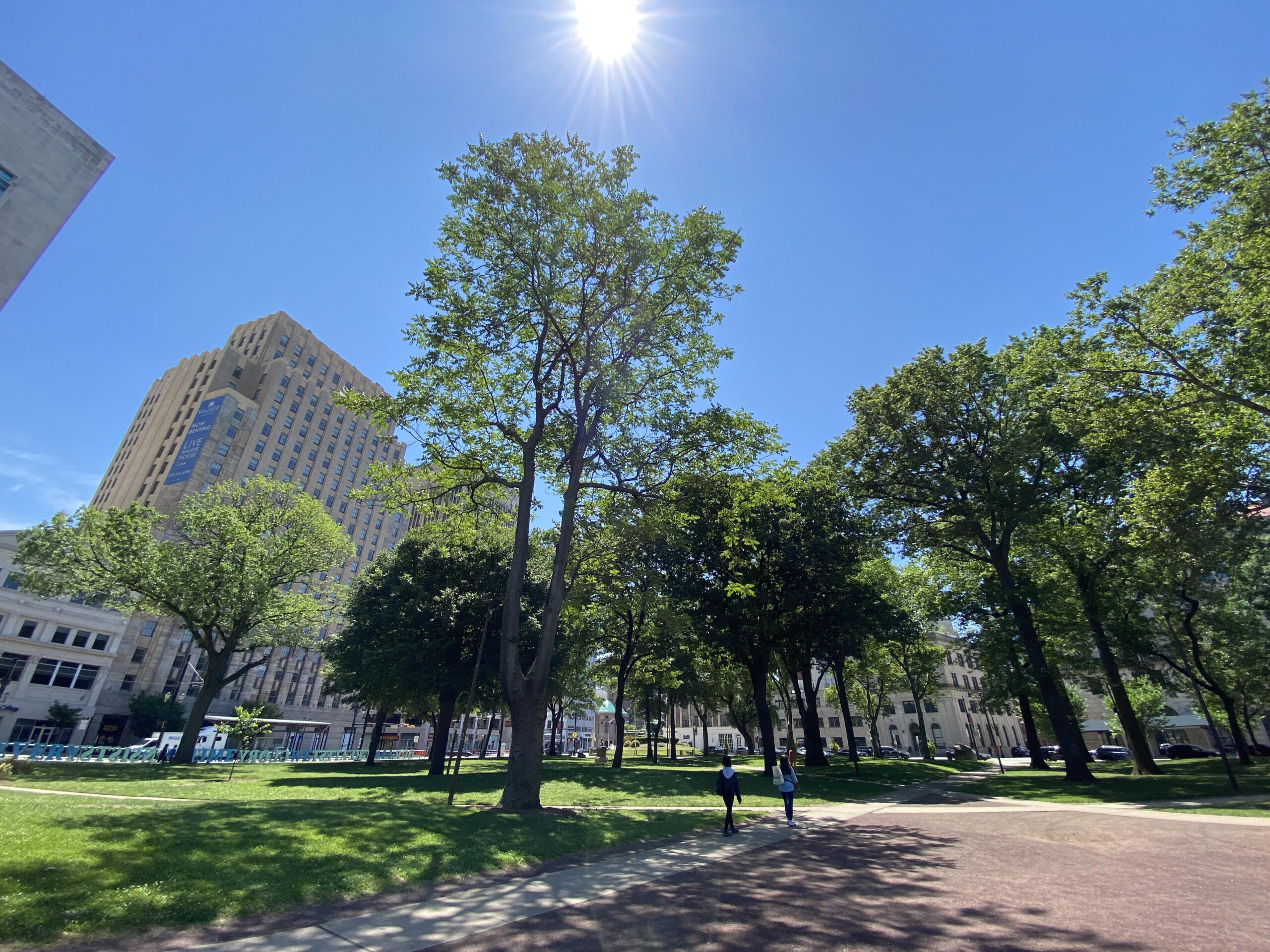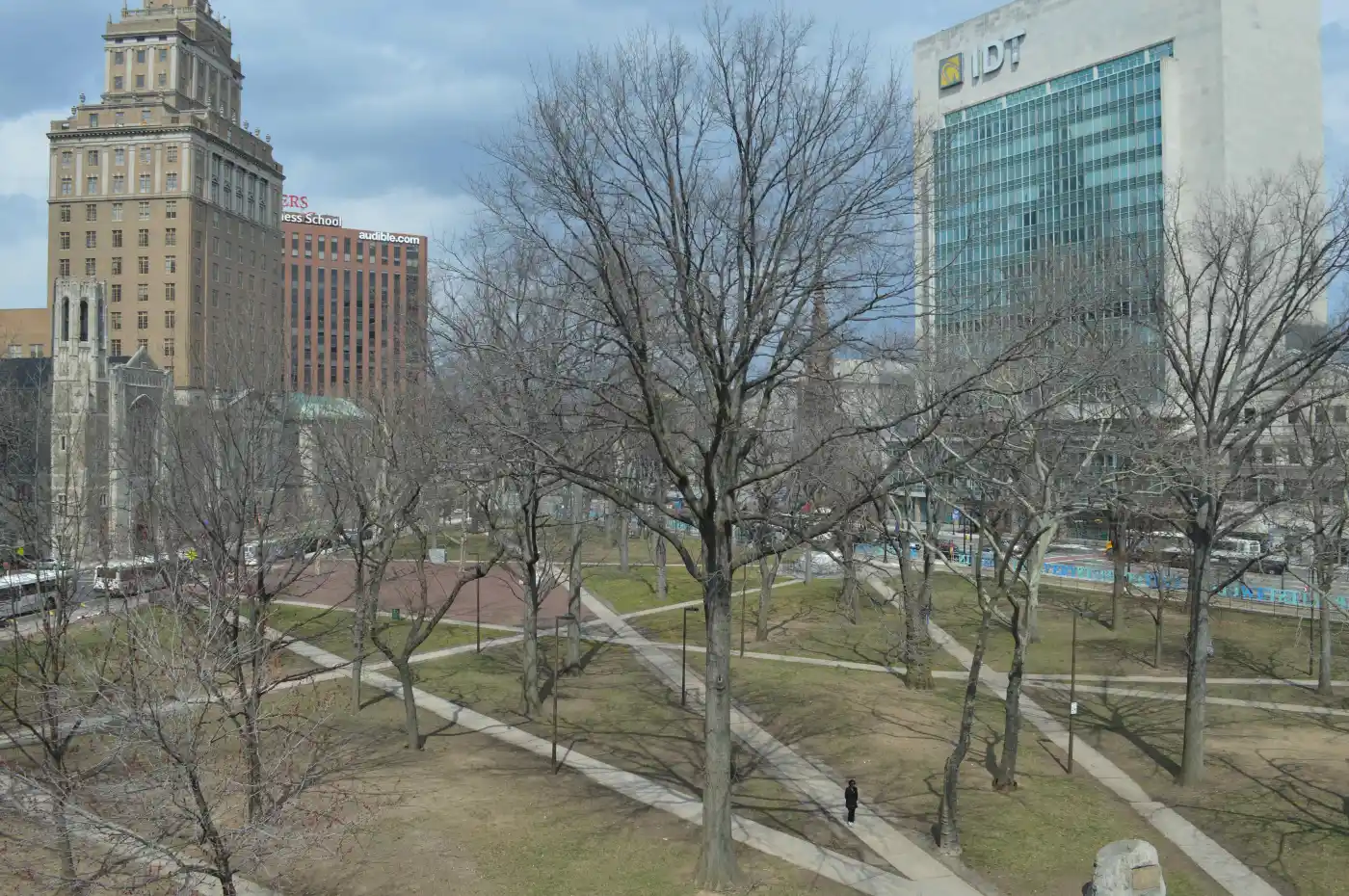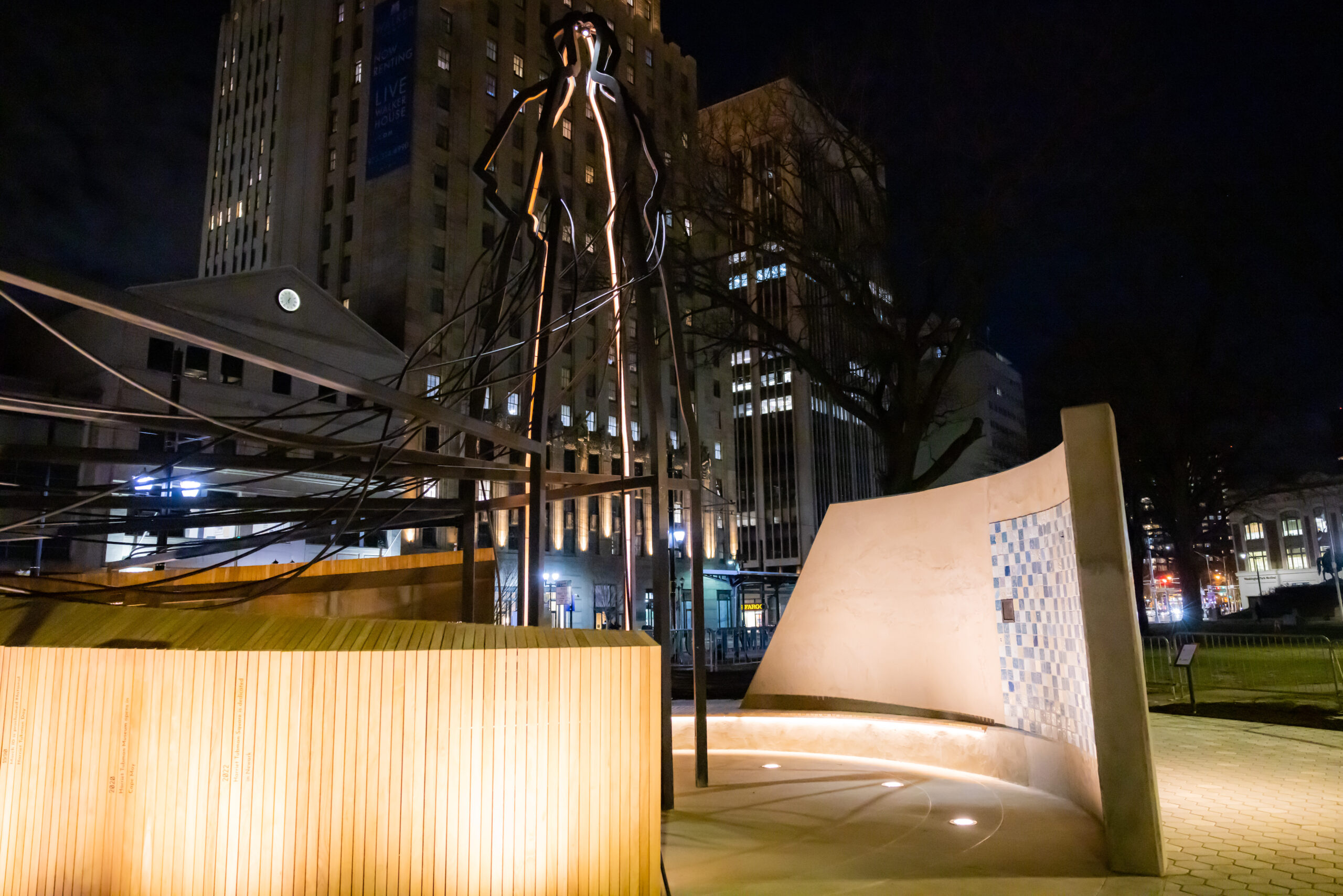Harriet Tubman Square is a historic public space in downtown Newark, New Jersey, on land that was once part of the territory of the Munsee-speaking Lunaape (Lenape) people.
The park dates back to 1667, when Puritan settlers set aside the land as a commons, where Newarkers grazed their sheep and marketed their goods. The space was commonly referred to as “North Common” or “Upper Green”.
In 1795, the town voted unanimously to turn the commons into a park and named it after George Washington.


Over the next two centuries, cultural and civic institutions began to spring up around the edges of the park, such as The Newark Museum of Art, the Newark Public Library, theBallantine Mansion and Rutgers Business School. The park and its surrounding neighborhood were designated the Historic James St. Commons in 1978 and added to the National Register of Historical Places, becoming the city’s first historic district.
The park has been the site of numerous public statues installed during different time periods. In 1926, representatives of Newark’s Italian American community gifted a statue of Christopher Columbus to the city and installed in the park the following year. In June 2020, the Columbus statue was removed and relocated to St. Lucy’s Church.
In 2022, in celebration of Juneteenth holiday also known as “Emancipation Day”, the park was renamed Harriet Tubman Square, acknowledging the under-recognized histories of African Americans and abolitionists who played a role in the quest of liberation and justice in the United States. New Jersey was the last Northern state to legally abolish slavery in 1866. Though the park is triangular, the name Harriet Tubman Square is intended to signify its historic role as a town gathering place.It stands as a touchstone of Newark history, culture, and community engagement.
